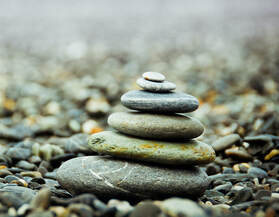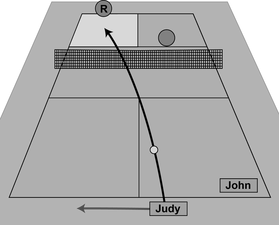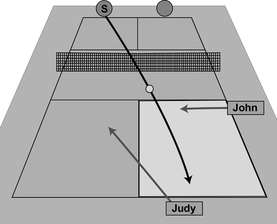Hitting to the Weaker Opponent
Prem talked about the tactic of hitting to the weaker partner when playing doubles. Conventional wisdom in pickleball says this makes sense. However, when he played doubles, Prem said he seldom participated in the rallies because the opponents never hit to him. His takeaway was that this is a sound strategy when trying to win, but it might not be the best strategy when trying to learn.
In a friendly game, it's bad form to completely avoid hitting to the better opponent. Not only will that person not enjoy the game, but you will miss out on the practice that playing with someone better gives.
Beyond that, I began thinking about other tactics I've seen used in more serious play (or by more serious players in friendly games with each other). In a tournament, players do things they would not do in a friendly game. Besides the constant targeting of the weaker player, they poach their partner's shots, and they hit balls directly at their opponents. Serious players on the tournament circuit need to practice seriously, and they'll exploit any option that promotes a victory and isn't against the rules.
Tagging the Opponent
Purposely hitting your opponent with the ball (or "tagging") stirs up controversy and deep feelings. This tactic is not against the rules and can be effective when your opponent is at the net and drops the paddle below chest height. But if the game is purely social, and especially if levels are mixed, smacking a ball with a lot of force to any area above the chest is frowned upon and probably should be followed with an apology.
Some players refuse to target others and instead aim at their opponent's feet or toward the hip or armpit area of the paddle-hand side—areas that are difficult to reach with ease. Yet competitive players at the non-volley zone line should expect to be hit and take measures to fend it off the ball (keep your paddle at chest height), dodge it, or surrender by turning their back. Tagging, whether accidental or intentional, is part of the game.
I've been hit many times, and only once did I carry a mark afterward (a shot that smacked the bridge of my nose and my eye). In all cases, I continued playing and accepted that such things happen. (The opponent's apology went a long way to making the pain hurt less.)
Poaching
The issues surrounding this tactic are reminiscent of hitting to the weaker opponent, above. Whether or not poaching is well received by a partner depends on whether you (as a team) have chosen to use it as a strategy or whether one of you is simply being bullied. Hopefully not the latter, and if so, I suggest you find another partner.
Poaching takes practice, so it's appropriate to include it in social games when it's decided together. An occasional unexpected poach is also fine, assuming the poacher makes the point! Otherwise, overzealous poaching during social games is also frowned upon. In competitive play or tournament practice, poaching can be a good tactic to surprise your opponent and ensure the ball is returned.
How do you feel about playing keep away from the better opponent? What about tagging and poaching? When are these tactics appropriate and when are they not?




 RSS Feed
RSS Feed